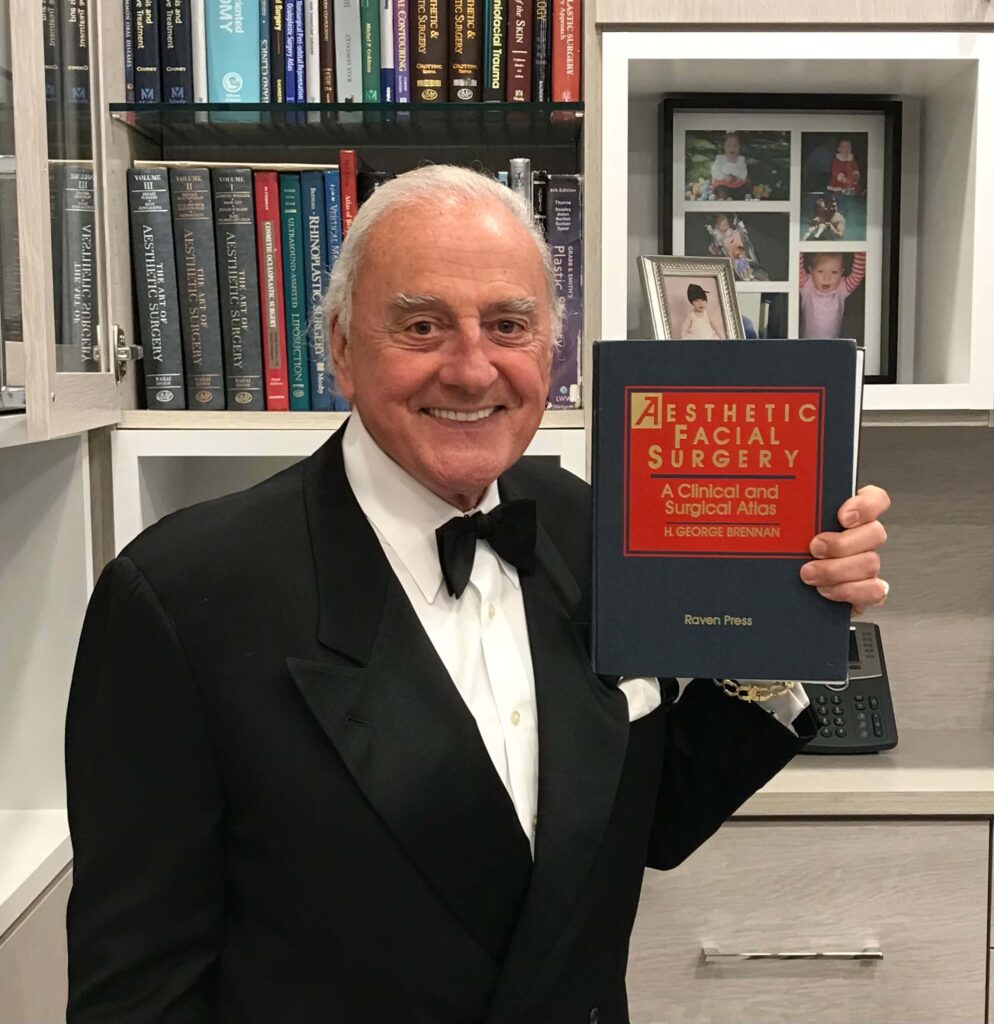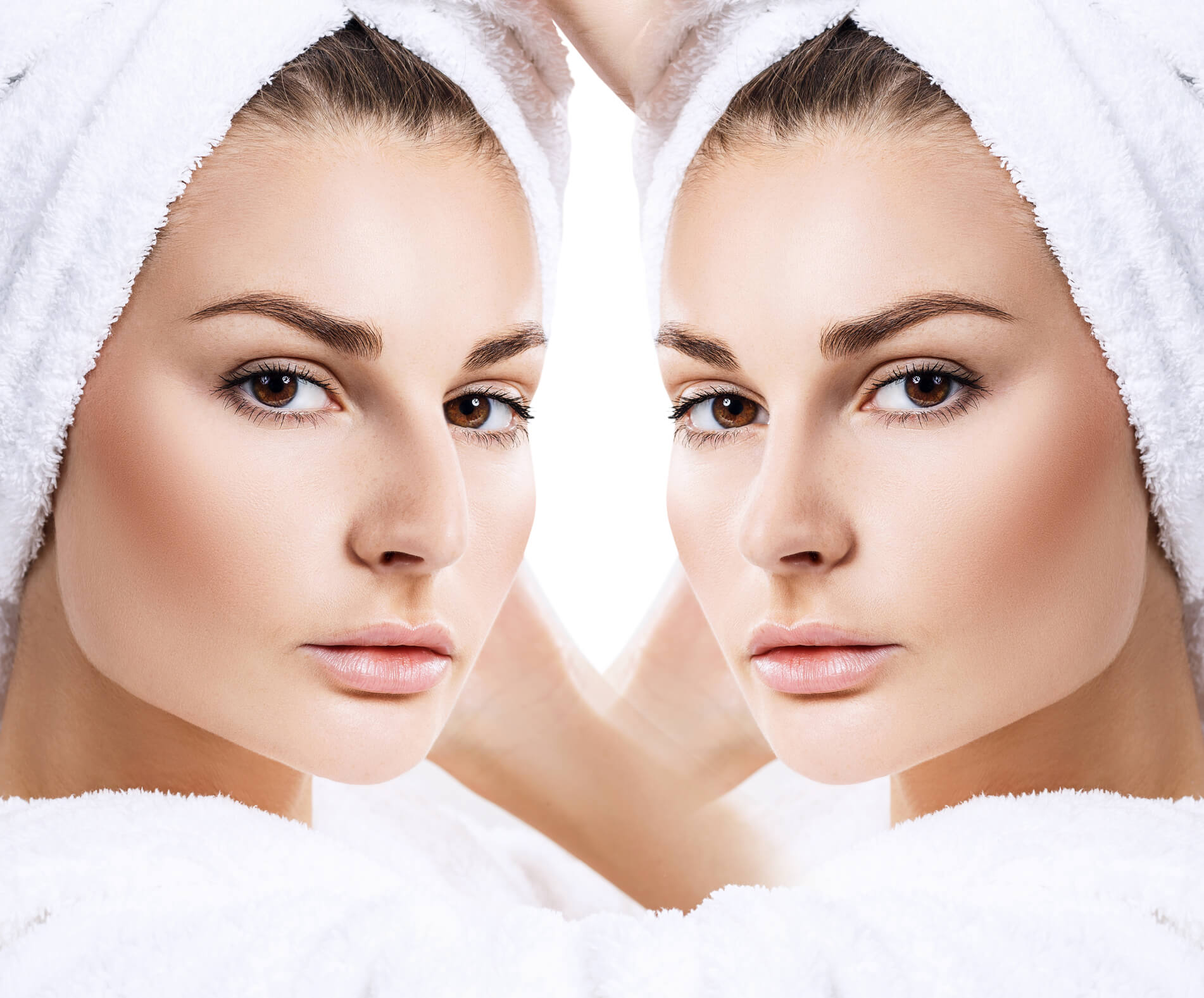Rhinoplasty Orange County
Call The Office
Office Location
400 Newport Center Dr , #100 Newport Beach, CA 92660
Email Us
info@drgeorgebrennan.com
Best Rhinoplasty Surgeon in California
If you’re unhappy with the size or shape of your nose, rhinoplasty Orange County is a procedure worth considering. Under the care of a skilled cosmetic surgeon like Dr. George Brennan, MD, FACS, rhinoplasty offers the chance for men and women in Orange County, California, to refine the contours of their nose. If you have questions or would like more information about the possibilities afforded through rhinoplasty, book a consultation with Dr. Brennan today. Online scheduling is one option, or you’re always welcome to call to check appointment availability.
What is Rhinoplasty?
Rhinoplasty often referred to as “nose job patients,” is a surgical procedure that changes the shape of your nose, including the tip, to improve facial harmony and breathing functionality. It is among the most popular surgeries for both women and men, as it has the power to improve overall facial features.
Not only can rhinoplasty address cosmetic issues, but it also has the power to improve your quality of life if you suffer from breathing problems. Everyone has a unique set of motivations for pursuing rhinoplasty in Southern California, and Dr. Brennan provides an overview and explanation of what to expect during your consultation.
How Rhinoplasty Changes the Function of the Nostrils
Rhinoplasty often includes a reduction component, where the surgery involves reshaping the nose by modifying or removing parts of the bone, resulting in a more balanced and harmonious facial look.
Rhinoplasty can significantly influence the functionality of our respiratory system. This part of our body allows air to flow in and out of the nasal passages. Individuals may sometimes undergo rhinoplasty to correct issues like a deviated septum or other structural problems that impede breathing.
By reshaping the interior structures of the nose, rhinoplasty can enhance airflow, leading to improved breathing and overall respiratory health. However, it’s essential to note that while rhinoplasty can improve respiratory functionality, it also carries risks.
If not done correctly, it could compromise the natural function of the respiratory system. Therefore, this procedure must be performed by a skilled and experienced professional who can balance aesthetic goals with preserving and improving respiratory function.
What Issues Are Addressed Through Rhinoplasty?
Rhinoplasty is a versatile procedure that corrects numerous issues related to the shape or function of your nose. Even better, multiple issues can be addressed during the same surgery, giving you an excellent value.
- Some of the more common issues treated with rhinoplasty include:
- Decreased size of the nose
- Bumps or depressions on the dorsum of the nose
- Nasal asymmetry
- Wide, large, or upturned nostrils
- Bulbous, hooked, upturned, or drooping nasal tip
- Wide Bridge
Dr. Brennan has a unique combination of technical skill, experience, and artistic vision needed to create gorgeous surgical outcomes. He can examine the size and shape of your nose in relation to the rest of your face and suggest alterations to create the best possible balance and symmetry.
How extensive is recovery after a rhinoplasty?
Rhinoplasty is a minimally invasive procedure that focuses on a very small area of tissue. That means a swifter recovery time and less postoperative discomfort as compared to many other surgical operations.
Dr. Brennan designed a state-of-the-art procedure that ensures:
- No pain
- No packing
- No downtime
- Natural results
You’ll be able to return to normal activities within one day of your procedure. A minimal degree of temporary swelling and bruising is normal after rhinoplasty, but your body’s natural healing powers quickly work to restore a normal appearance. The incision lines for rhinoplasty are hidden inside your nose, so there is no visible scarring.
The bones, and skin on your nose change very little as you age. You can expect the results of your rhinoplasty to be permanent, an uncommon and well-appreciated outcome for facial plastic surgery.
Who is a Good Candidate for Rhinoplasty?
To produce a natural-looking nose that is in balance with the rest of the face, rhinoplasty necessitates not only great skill but also a high level of artistry. Every person’s nose is unique, so the new form must suit their face equally. Many variables will influence the new form, including one’s height, age, skin thickness, and ethnicity. Rhinoplasty surgery may also be used to correct the formation of various elements, such as the forehead, eyes, and chin, in order to give a more natural look. You may be a good candidate for a Rhinoplasty if:
- You want to enhance the look of your nose.
- You want to enhance your respiratory function.
- You’ve previously had nasal surgery and are unhappy with the outcomes.
- unhappy with the size, structures, or proportions of their nose
The best candidates are in good physical health and have realistic expectations of the results of the rhinoplasty surgery.
Rhinoplasty Surgery can be used to improve the features of the nose in a number of ways. The most common reasons for seeking rhinoplasty are to remove a bump, change the shape of the tip, or narrow the width of the nostrils. In some cases, nose modifications can also be used to correct a deviated septum, which is a problem with the anatomy of the nose that can cause breathing difficulties.
The majority of people who undergo rhinoplasty are very happy with the outcomes of their surgery. Be sure to ask the rhinoplasty specialist any questions you have about the procedure so that you can make an informed decision.
A deviation of the nose is when the nose is not symmetrical. This can be due to a number of different factors, including injury, birth defects, and even the aging process. When the nose is not symmetrical, it can often be a source of distress for the individual.
The goal of rhinoplasty is to achieve a nose that is in harmony with the rest of the face. The doctor will take into account the patient’s facial structure, skin type, and desired results when planning the surgery. There are two main types of rhinoplasty: open and closed. In an open rhinoplasty open, the doctor makes an incision in the columella, the strip of tissue that separates the nostrils. This approach allows the doctor to have a clear view of the nasal structure and provides more access to the inside of the nose. A closed rhinoplasty is performed through incisions made inside the nostrils. This technique is less invasive but may not provide as much access to the nasal structure.
To learn more about rhinoplasty and how it can transform your nose, book a one-on-one consultation with Dr. Brennan today, either online or by phone.
Revision Rhinoplasty: Reasons and Results
One of the first steps in the procedure is to consult with a specialist. During the consultation, he will evaluate the patient’s medical history and current condition. They will also discuss the patient’s goals and objectives for the surgery. It is important for the doctor to have a clear understanding of what the patient wants to achieve with the procedure.
Once the rhinoplasty consultation is complete, the doctor will develop a surgical plan. This plan will take into account the patient’s individual characteristics and desired outcomes. The doctor will also consider the safety and feasibility of the surgery before moving forward.
Revision nose job is a nose surgery technique that’s performed to correct or improve the previous surgery outcomes. It’s generally more difficult than the original method and requires a more experienced rhinoplasty doctor.
The definition of the procedure is corrective rhinoplasty, which is performed to improve the nose’s overall look.
While the definition of revision rhinoplasty is that surgery is performed to correct a number of aesthetic concerns, it’s most often done to address functional problems. Examples are:
* Breathing issues
* Crookedness
* Persistent pain
* Sensitivity to cold or heat
* Sinus problems
* Sleep apnea
If you’re considering revision rhinoplasty in Orange County, it’s important to consult with doctors who have extensive rhinoplasty experience performing both primary and revision rhinoplasty.
How To Prepare for Your Nose Surgery?
Your rhinoplasty surgeon will give you specific instructions on how to prepare for your nose job. It is important to follow these instructions carefully.
1. Stop taking certain medications and supplements at least two weeks before surgery. These include aspirin, ibuprofen, vitamin E, Ginko Biloba, St. John’s wort, and more.
2. Do not smoke or use nicotine products for at least two weeks before and after rhinoplasty surgery. Nicotine slows down the healing process and causes complications.
3. Avoid drinking alcohol for at least 24 hours before rhinoplasty. Alcohol can increase bleeding and slow down wound healing.
4. Get plenty of rest and eat a healthy diet in the days leading up to your rhinoplasty surgery. This will help your body to heal quickly and reduce the risk of complications.
5. Arrange someone to drive you home after rhinoplasty surgery and stay with you for at least 24 hours. You will not be able to drive yourself home due to the side effects of the anesthesia.
6. Follow all of your rhinoplasty surgeons‘ instructions carefully in the days and weeks following nose surgery. This includes taking all of your pain medications as prescribed and attending all follow-up appointments.
What to Expect During and After Your Rhinoplasty Surgery?
Rhinoplasty techniques can correct a number of different nasal problems, including a nasal septum, a hump on the nose bridge, and a nostril that is too wide.
During nose surgery, the doctor will make incisions on either the inside of the nose or across the columella. Once these incisions are made, it will be able to access the underlying bone and cartilage and make any necessary corrections. In some cases, it may need to place a splint inside the nose to help support its new look as it heals.
Rhinoplasty is usually performed as an outpatient procedure, which means that patients can go home the same day as their surgery. The recovery from rhinoplasty usually takes about one week. During rhinoplasty recovery, it is normal for patients to experience some swelling and bruising around the nose and eyes. These side effects will typically resolve within a few weeks.
If you are looking for the best rhinoplasty, it is important to consult with board-certified plastic surgeons who have experience performing this surgery. During your consultation, your specific goals and concerns will be evaluated to decide if rhinoplasty is a suitable option for you. Additionally, an estimate of the probable cost for your nose surgery will also be provided.
Rhinoplasty Pricing
The rhinoplasty cost will vary depending on a number of factors, including the surgeon’s fee, the geographic location of the practice or plastic surgery center, and the complexity and difficulty of the operation. In general, the cost of rhinoplasty will range from $7,000 to $10,000.
Most health insurance plans will not cover the cost of plastic surgery treatment options, so it is important to factor this into your budget.
Rhinoplasty can be used to correct a number of conditions, including:
-Nasal trauma
-Birth defects/abnormalities
-Breathing difficulties
-Crookedness
-Enlargement
-Humps on the bridge of the nose
-Nose size in proportion to the face
Rhinoplasty is typically performed under general anesthesia or IV sedation. The nose surgery usually takes one to two hours, but may take longer if more extensive work is required.
You will likely feel some pain and discomfort after the nose surgery, which can be controlled with pain medication. Tylenol is an over-the-counter medication that is used to relieve pain and fever. Most people are able to return to work or school within a week, although strenuous activity should be avoided for at least four weeks.
What Are the Benefits of Undergoing Rhinoplasty Procedure?
One of the primary benefits of rhinoplasty treatments is that they can dramatically improve the structures of your nose, but it can also be done for functional purposes, such as correcting a birth defect or injury. If you are unhappy with the size, or symmetry of your nose, rhinoplasty can often provide significant outcomes. Furthermore, nose reshaping can assist with the correction of nose structure problems in your nose, such as breathing difficulties, breathing function, nasal airways, nasal allergies, nasal creases, or a deviated septum.
What Are the Risks of Undergoing Rhinoplasty?
The most common risks associated with rhinoplasty include:
– Bleeding: There is always a risk of bleeding during surgery. Bleeding during rhinoplasty is usually minimal and can be controlled with pressure or sutures. However, in rare cases, more significant bleeding can occur, which may require a transfusion.
– Infection: There is also a small risk of infection following rhinoplasty surgery.
– Swelling and bruising: Swelling and bruising are common side effects of any surgery.
– Scarring: All surgeries result in some degree of scarring. However, rhinoplasty scar is usually small and inconspicuous. In some cases, the scars may be more noticeable.
What is Recovery From Rhinoplasty Like?
Most people report minimal pain and discomfort after nose surgery in Orange County. Recovery times vary from person to person but are typically short. Most people feel well enough to return to work or school within a week or two.
There will likely be some swelling and bruising around the eye for the first few days after surgery. Ice packs can help reduce these symptoms. The swelling will gradually subside over the course of several weeks. It may take up to six months for the final results of surgery to become apparent.
If you are looking for the best rhinoplasty in Orange County, it is important to consult with a board-certified plastic surgeon who has expertise in performing this surgery. During your consultation, the surgeon will assess your individual goals and concerns and develop a treatment plan that is right for you.
Ethnic and Asian Rhinoplasty
It’s no secret that Asians and other ethnicities often have different nose shapes and sizes than Caucasians. This can be a source of concern for many people, as they may feel that their nose is not proportionate to the rest of their face.
Luckily, there is a solution! Asian Rhinoplasty in Orange County and Ethnic Rhinoplasty, also known as septorhinoplasty, can help to improve the shape, and angle of your nose, giving you the look you’ve always wanted.
This type of surgery is typically performed on people of Asian or African descent, as more and more people are seeking to improve their structures. However, it’s important to understand the background and objectives of this procedure before undergoing it. Contact Dr. George Brennan if you’re thinking about getting an Asian rhinoplasty in Orange County.
How Long Do Rhinoplasty Results Last?
The results of rhinoplasty in Orange County can last for many years, although some patients may eventually require revision surgery.
The length of time that rhinoplasty last depends on a number of factors, including the type of surgical procedure performed and the healing process of the individual. In general, however, most patients can expect their results to last for many years.
Does Male Rhinoplasty Differ From Female Rhinoplasty?
The answer to this question is both yes and no. In general, the amount of tissues and bones that need to be removed or augmented is usually less in men than in women. This is due to the fact that men tend to have thicker skin and higher, more prominent bones in their noses. However, there are always exceptions to every rule.
There are also some anatomical differences between male and female noses that can affect how a rhinoplasty approaches. For example, men often have larger turbinates (the structures inside the nose that help filter air). This can sometimes be an issue when it comes to breathing, so it’s something that needs to be taken into account during surgery.
Another thing to keep in mind is that male noses tend to have a stronger, more defined contour. This is due to the fact that men have more testosterone, which gives their features a more masculine look.
When it comes to aesthetics, there are some subtle differences between what is considered attractive in a man’s nose versus a woman’s nose.
Of course, these are just general guidelines. Every patient is different, and every surgeon has their own methods and ideas when it comes to creating the perfect nose. The most important thing is to find someone you trust who has the ability to understand and achieve your specific goals.
Anatomical Differences of Nose:
The nose is a vital organ of the human body. It is located in the center of the face between the eyes. The nose is divided into two parts: the external nose and the internal nose. The external nose comprises bone, and soft tissue forms the internal part of the nose.
There are many anatomical differences between the nose and the rest of the face. The nose is the only protruding feature on the face. The nostrils are located at the base of the nose and are separated by the septum. The septum is made up of bone and cartilage and divides the nasal cavity into two chambers: the right chamber and the left chamber.
The nose is also involved in the sense of smell. The olfactory nerve endings are located in the upper part of the nose, near the septum. These nerves send signals to the brain that are interpreted as smells.
When performing rhinoplasty on male patients, Dr. Brennan considers such natural variations as skin thickness, nostril width, and nasal tip projection.
Aesthetic Ideals of the Nose?
It is no secret that the nose is one of the most important features of our face. It is the center point of our face and can greatly affect our overall appearance. Because of its importance, many people are concerned about the way their nose looks and often seek out ways to improve it.
There are many different surgeries that can be done to improve your nose. These include things like rhinoplasty, septoplasty, alar base reduction, and more. Each of these procedures has its own set of advantages and disadvantages, so it is important to do your research and consult with a qualified physician before making any decisions.
One of the best ways to learn about the different options available for improving the looks of your nose is to read articles and reviews written by others who have gone through the surgery. You can also find a lot of useful information by talking to your friends or a family member who may have had experience with this surgery.
Non-Surgical Nose Surgery
Non-surgical Rhinoplasty uses injectable fillers to alter the appearance of the nose without making any incisions. A Filler can be used to add volume to certain areas of the nose, smooth out bumps or irregularities, and even straighten a crooked nose.
The advantage of choosing plastic surgeons in Orange County for your rhinoplasty is that you can be sure you are getting the best possible care.
Don’t do hard exercise after rhinoplasty for at least a week. This means no jogging, weight lifting, etc. You can walk as much as you like starting the day after your surgery is one of the alternatives. Strenuous activity will increase your swelling and could open your incisions.
Most people feel that their new nose is a vast improvement over their old one and that the change reflects a lifetime of dissatisfaction with their looks.
The Health Insurance Portability and Accountability Act, or “HIPAA”, is a set of regulations that protect patients’ privacy. In order to ensure that your personal information remains confidential, your surgeon will ask you to sign a HIPAA form before surgery. This form allows to share information about your surgery with other members of the medical team, but it does not allow them to share this information with anyone outside of the hospital or clinic.
The thoughts and amounts of growth regarding rhinoplasty are quite positive. The surgery has been around for centuries, with records of it dating back to ancient India. Rhinoplasty was first developed for functional purposes, to correct birth defects or injuries that had impacted the nose. Over time, it has evolved into the highly skilled and refined cosmetic procedure that it is today.
One of the most common reasons people seek out rhinoplasty is because they are unhappy with the visibility of their nose. No matter what the reason, rhinoplasty can often provide patients with the resolution they are looking for.
The subject of rhinoplasty is one that has always been of great interest, and with good reason. The nose is a central feature of the face, and even a small change can have a dramatic impact on someone’s appearance. Because of this, rhinoplasty is often considered to be one of the most challenging types of plastic surgery.
Rhinoplasty may be rather uncomfortable, but it can provide you with a sense of comfort. It may gain you admiration from your community. Rhinoplasty is a science, and it works.
Rhinoplasty can change the way you see yourself in the mirror. Over the past few years, rhinoplasty has grown in popularity and accuracy.
The heritage of rhinoplasty dates back to ancient times. The first recorded rhinoplasty was performed in India in 600 BC. The Egyptians were also known to perform nose jobs.
When performed by an expert, rhinoplasty is a safe operation. The outlook for rhinoplasty is positive. The majority of patients are satisfied with the outcomes of their operations.
How to Choose the Best Rhinoplasty Surgeon?
When it comes to choosing the best rhinoplasty specialist, there are several factors you should take into consideration. It is important to find someone who you feel comfortable with and who you can trust. Be sure to do your research and ask around for recommendations. Once you have found a few potential rhinoplasty doctors, be sure to ask them about their experience, training, and credentials.
In addition to being board-certified, you should also consider the surgeon’s experience and credentials. Choose someone who has performed numerous successful rhinoplasty procedure and ask to see before-and-after photos of previous patients.
It is also important to find someone who you feel comfortable with and who will listen to your concerns and goals for the surgery.
Once you have narrowed down your list of potential surgeons, schedule consultations with each. This is an important step because it will give you the opportunity and a better idea of their personality, bedside manner, and surgical skills.
During your consultation, it’s crucial to observe how your questions are answered and whether there’s a sense of being rushed or impatience. You should also ask about their experience with the particular type of rhinoplasty you are interested in.
For example, if you are interested in a septoplasty (a surgery to correct a deviated septum), the individual performing the surgery has experience performing this type of procedure.
Be sure to ask about the potential risks and complications of rhinoplasty, as well as what to expect during recovery. Once you have all the information you need, you can make an informed decision about whether or not rhinoplasty is right for you. A physical examination and photographs of your nose will also be performed.
Most people are happy with their results from rhinoplasty and feel that it boosts their self-confidence and self-esteem. However, as with any surgery, there are risks involved. These include bleeding, infection, and reaction to the anesthesia. After the surgery, your nose will be covered with bandages and splints.
Rhinoplasty is a very individualized procedure. The rhinoplasty doctor will take the time to listen to your concerns and develop a surgical plan that meets your needs and expectations.
The different types of rhinoplasty and the risks and benefits associated with each will also be explained to you. It is important to understand all your options before making a decision.
Nose Jobs in Orange County, California
Rhinoplasty, also called nose surgery, is one of the most common plastic surgery procedures. It can improve the features of your nose and correct breathing problems.
The shape of your nose is determined by the bone and cartilage that make up its framework. During the rhinoplasty procedure, your facial plastic specialist will change the shape of these bones and cartilage to give you the nose you want.
Cartilage grafts are commonly used in rhinoplasty to create or reinforce various structures of the nose. There are several types of cartilage that can be used for grafting, but the most common type is taken from the ear.
Most rhinoplasty patients choose to have nose surgeries to improve the features of their noses. However, some people have rhinoplasty procedures to correct a birth defect or injury. Others may need it to relieve breathing problems caused by an obstruction in the nasal passages. A broken nose can occur for a variety of reasons, including trauma to the face from an accident or injury.
There are two main types of rhinoplasty: open rhinoplasty and closed rhinoplasty. In an open rhinoplasty, the doctor makes an incision in the skin between the nostrils, which gives him or her direct access to the bone and cartilage. In a closed rhinoplasty, all incisions are made inside the nostrils.
Rhinoplasty technique is a very personal procedure, and you should do it for yourself, not for anyone else. It is important to have realistic expectations about the rhinoplasty results of the surgery. The best results are achieved when the patient and doctor are in harmony with each other.
The anesthesia used for rhinoplasty will depend on the type of procedure being performed. Open rhinoplasty usually requires general anesthesia, while closed rhinoplasty can be done under local or general anesthesia.
If you’re looking for rhinoplasty in Orange County, CA, it’s important to understand the potential risks and complications of the procedure. You should also be aware that the results aren’t always perfect and you may need a second surgery, called revision rhinoplasty, to improve the look of your nose.
Meet Dr. George Brennan: A Premier Cosmetic Surgeon
One of the things that set Dr. Brennan apart from other surgeons is his focus on the patient experience. He believes that every patient deserves to be treated with respect and compassion. He takes the time to get to know each of his patients and their individual needs. This allows him to provide them with the best possible care.
Dr. Brennan is also very committed to education. He regularly attends conferences and seminars to stay up-to-date on the latest developments in his field.
Dr. Brennan’s approach to aesthetic surgery is unique. He believes that “beauty is in the eye of the beholder.” This means that he takes into account each patient’s individual goals and desires when planning a procedure. He also believes that plastic surgery should be used to improve a person’s appearance, not to create an artificial look.
This philosophy has led him to become one of the best cosmetic surgeons in Newport Beach, California. Patients come to Dr. Brennan from all over the globe seeking his expertise.
The team and staff at Dr. Brennan’s office offer co2 laser treatment, facelift, lip augmentation or lips surgery, chin augmentation, breast augmentation, breast reconstruction, blepharoplasty, neck lift, Septoplasty, septum repair, Juvederm, Brazilian butt lift, Restylane, breast reduction, breast revision, tummy tuck, Skin Rejuvenation, chin implant, Hair loss treatment ( Hair Grafting ), breast implants, nipple surgery, body sculpting, or any other sort of cosmetic procedure. Dr. Brennan can help you achieve your goals. He will take the time to listen to your concerns and develop a treatment plan that is tailored to your needs.
Dr. George Brennan has a nature loving heart. He loves working with his peers to create beautiful works of art. Dr. Brennan also has a passion for education, and regularly offers suggestions and signs up for events to help his patients learn more about their bodies and the procedures they’re interested in.
Dr. Brennan has a gallery of cosmetic procedure on his website. He offers a variety of services to help people look better. He uses different types of lasers, and he is able to do a lot of things on an outpatient basis. He also has a photo gallery that shows his work.
If you are considering any type of cosmetic procedure in Orange County, you should definitely consult with Dr. Brennan. He will be able to give you an honest opinion about what he thinks would be the best course of action for you. He is also very affordable, and he offers financing options as a payment for his procedures.
The improvement of aesthetic surgery has been a career-long focus for Dr. Brennan.
Dr. Brennan is one of the top surgeons in the country when it comes to improvements in cosmetic surgery. He has helped many people achieve their desired results. He is always innovating and trying new things to help his patients achieve the best possible results.
Dr. George Brennan is your friend when it comes to your appearance. He will never give you an unwanted result. You can trust him to give you the best possible outcome.
Dr. George Brennan is an artist when it comes to cosmetic operations and has been in the business for over a decade. There is no comparison to his work and the results that he gets are always top-notch. His patients always walk away happy and with a smile on their faces, which is really all that matters in the end. He is extremely passionate about what he does and it really shows in his work.
He is very detail oriented and makes sure that everything is just perfect before starting the procedure. He has a very gentle touch and his patients always say that they feel completely at ease while in his care.
His commitment to helping other people look and feel their best is admirable, to say the least.
Dr. Brennan’s office is located in Orange County, California, U.S. He sees patients from all over the world. Dr. George Brennan also offers injectable procedures such as Botox, and Juvéderm. If you are living in Newport Beach, Beverly Hills, Laguna Beach, Irvine CA, or anywhere in Southern California, you are just a short drive away from Dr. Brennan’s office.
Before and After Photos
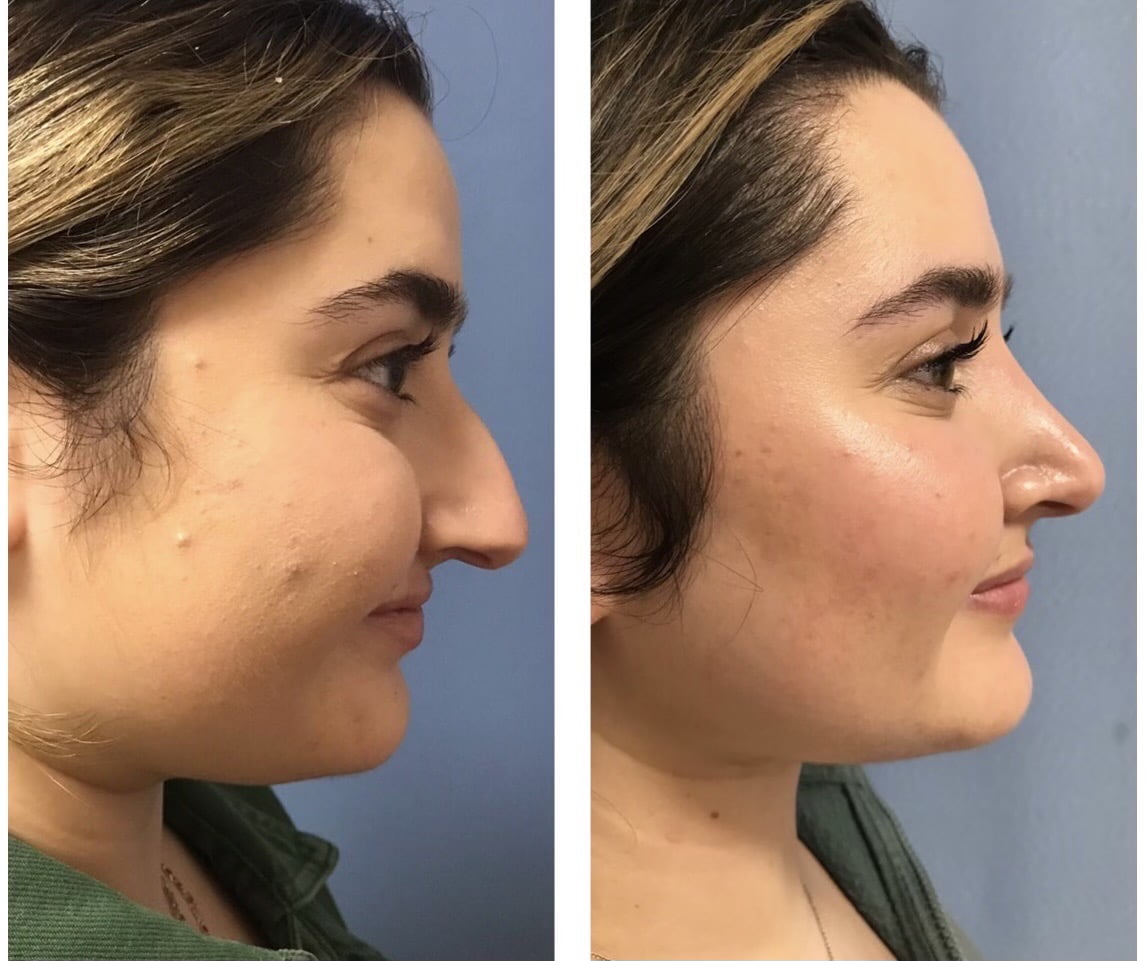
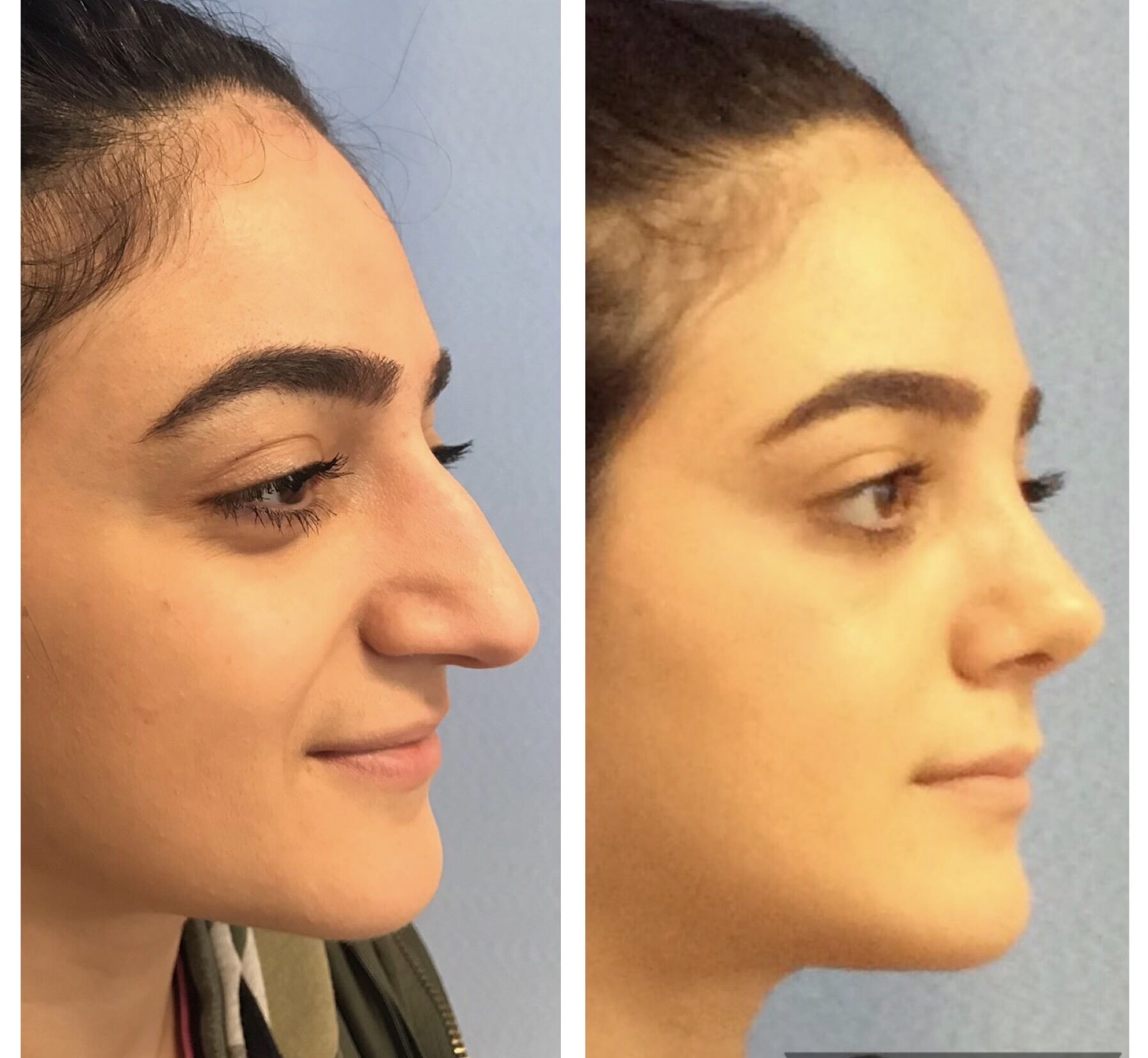
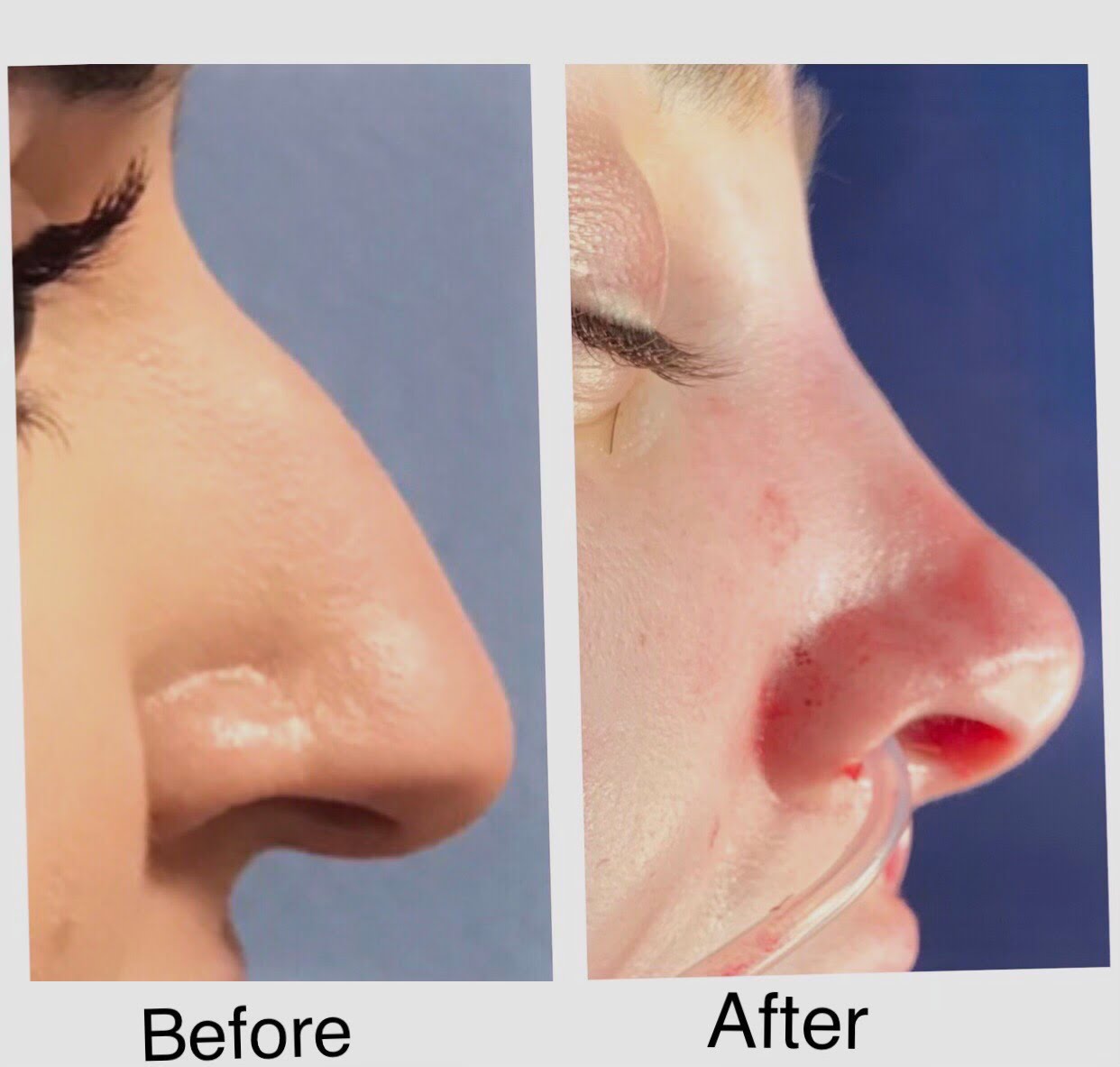
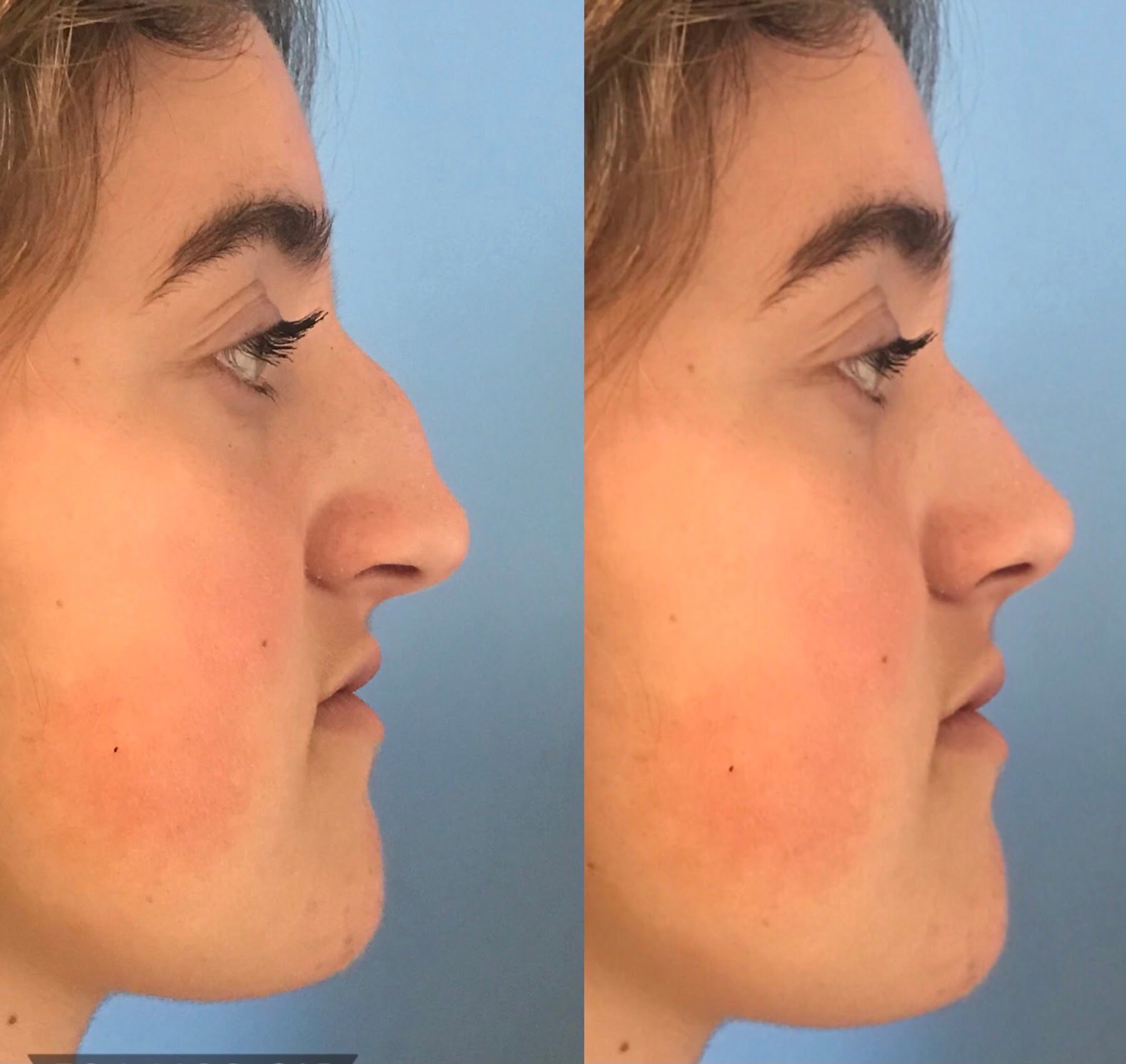
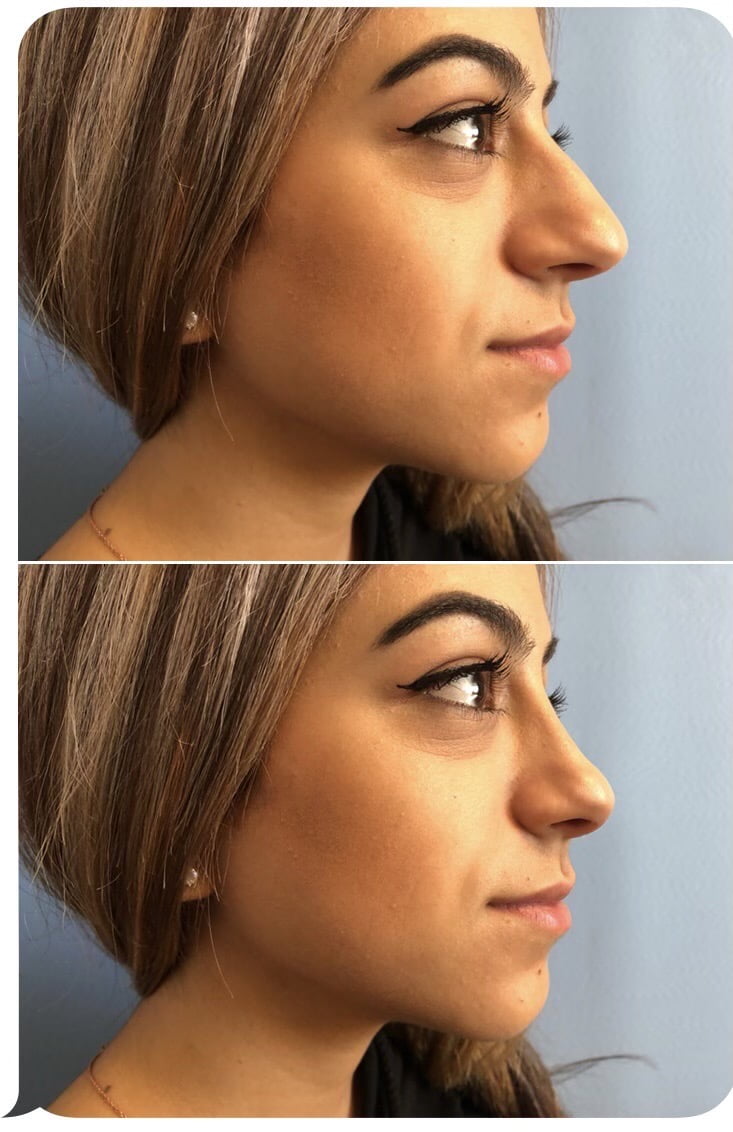
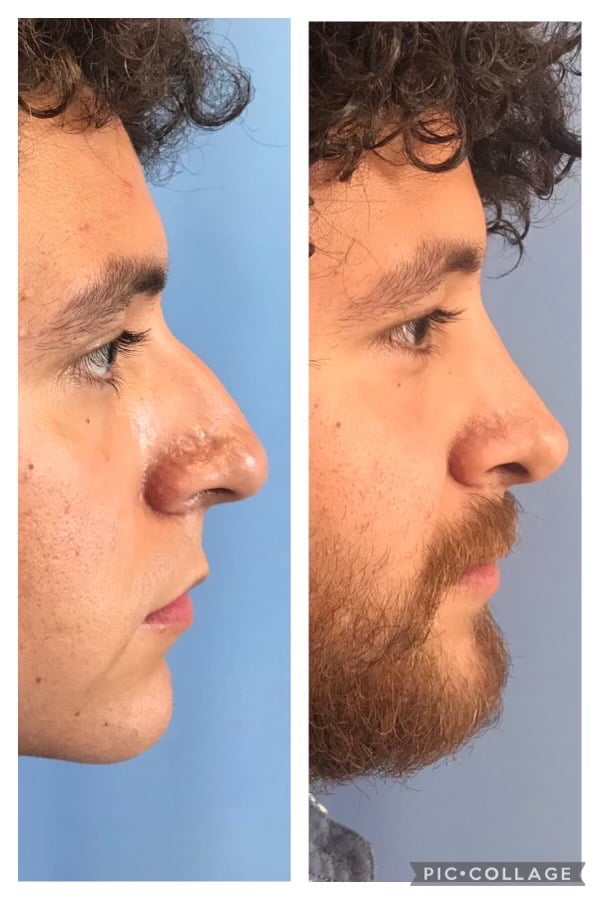
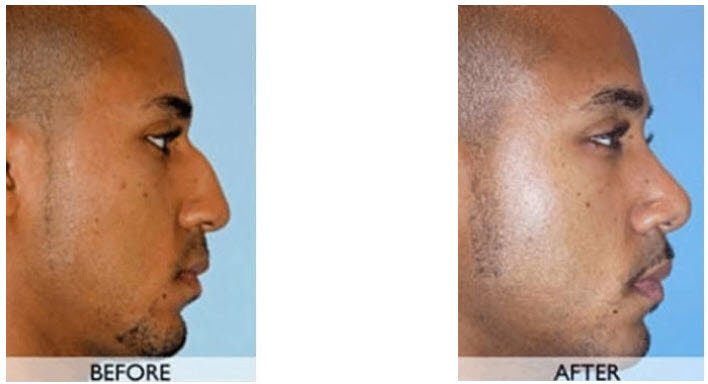
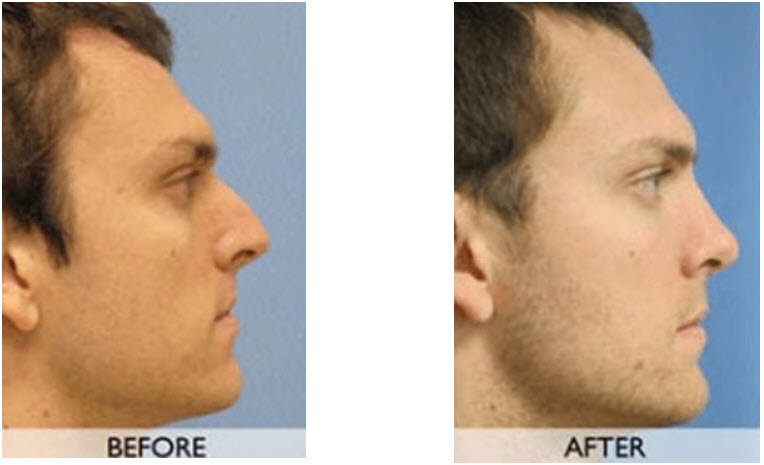
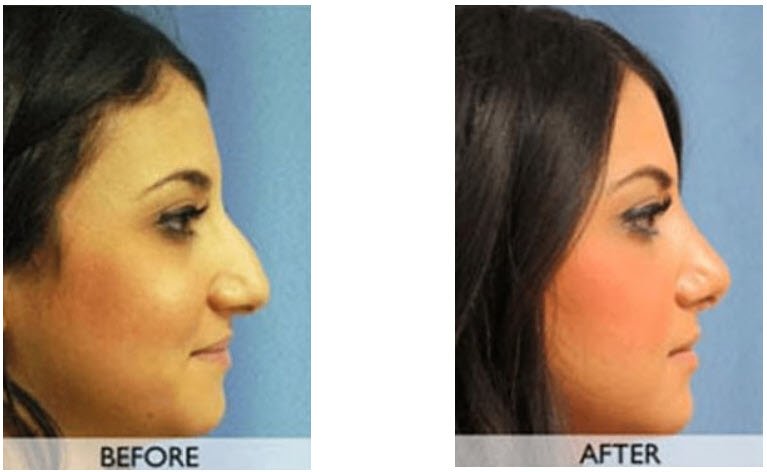

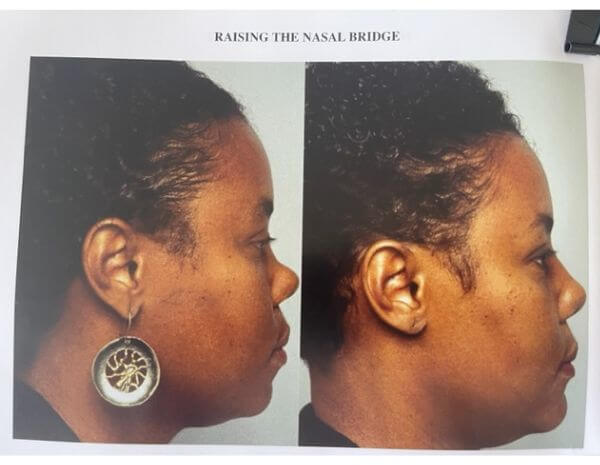

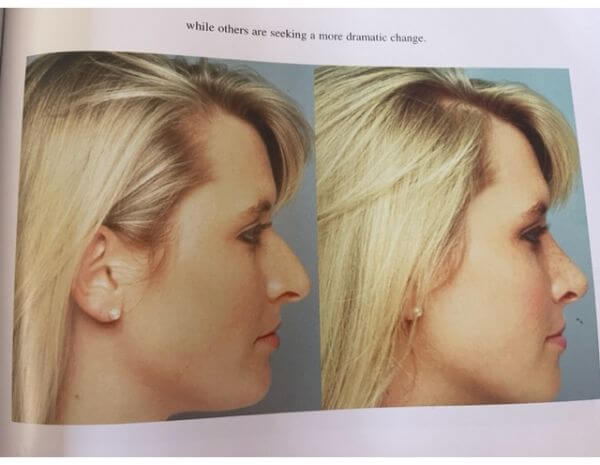
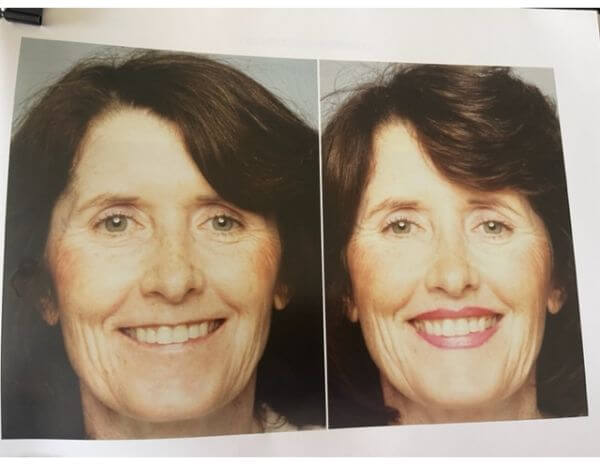
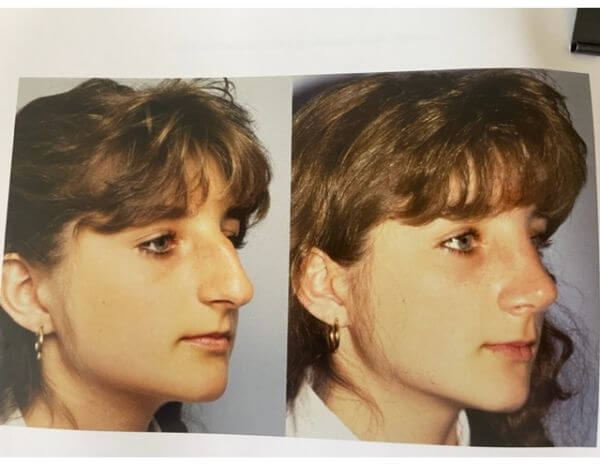
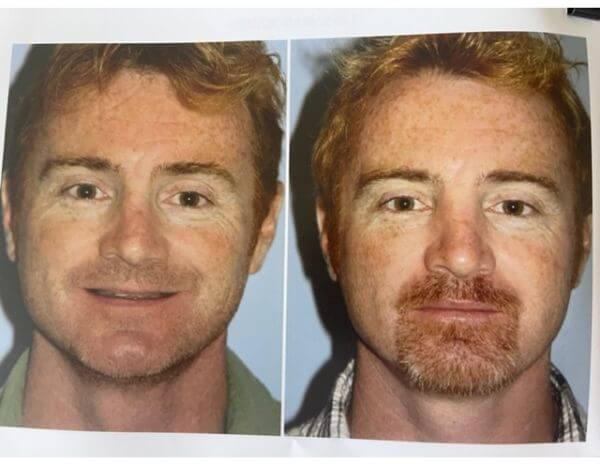
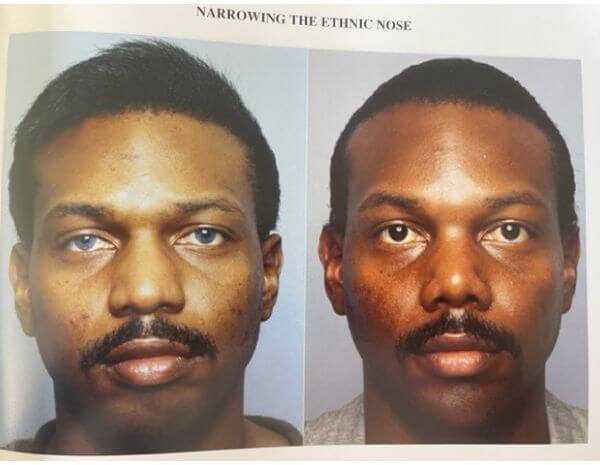
Additional Rhinoplasty FAQs
Should I get rhinoplasty or facial implants?
It is a common question that both men and women ask when they are considering rhinoplasty or facial implants, “Should I get rhinoplasty or facial implants?” Both can improve your face, but it is important to understand the differences between the two before making a decision.
What is Septoplasty?
Septoplasty is a type of procedure that’s used to correct a deviated septum. The septum is the bone and cartilage partition that divides the nasal cavity into two sides. A deviated septum occurs when the septum is displaced from its midline position. This can cause problems with breathing and may also contribute to a crooked nose appearance.
What are some tips for recovery after an additional surgery?
First, make sure to get plenty of rest. It is also important to keep your head elevated as much as possible to reduce swelling. Finally, avoid any strenuous activity or contact sports for at least six weeks to give your nose time to heal properly.
Avoid taking hot showers, eating warm meals, and keeping your home humid. Heat can exacerbate tissue edema, so stay cool and eat cold or room-temperature foods while your nose is in the early stages of healing.
What is having a rhinoplasty like?
It’s a very safe, minimally invasive surgical procedure that is performed in an accredited outpatient center.
Are the outcomes from rhinoplasty permanent?
Yes, they are.
How long does the nose job procedure take?
30 to 40 minutes.
What’s involved with a nose job?
A rhinoplasty is designed to improve the structure or the function or both of your nose.

